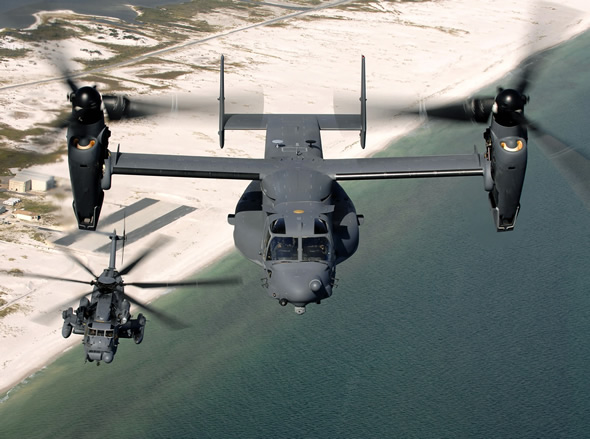
Japan’s Kyodo News Service has published a report that the Japanese Ministry of Defense (MoD) Fiscal Year 2013 budget submission will include a request for funding to pay for a study to determine if the V-22 Osprey tiltrotor aircraft can be successfully incorporated into future Japanese Self-Defense Force (JSDF) operations.
Adding the Osprey to the JSDF’s warfighting inventory was first proposed in October 2012 by ousted Prime Minister Noda’s administration. Then Minister of Defense Satoshi Morimoto initiated the proposal when he instructed his staff to develop a feasibility study to determine if the Osprey was a cost-effective means of enhancing Japan’s defense capabilities.
Mass public demonstrations protesting deployment of twelve US Marine Corps MV-22B Ospreys to Okinawa plagued the Noda administration throughout 2012 further widening a long-term rift between the national government and Okinawan residents. Anti-American groups in Okinawa have been organizing demonstrations for many years in an effort to force Tokyo to reduce the American military presence in the islands.
With the installation of the decidedly hawkish Shinzo Abe as Prime Minister, the prospect of the JSDF actually procuring the Osprey becomes more probable. Mr. Abe is known to support an increase in defense spending and is also expected to pursue a change to the Japanese constitution to remove or revise Article 9, the so-called “renouncement of war” clause.
With unprecedented growth in the warfighting capabilities of the People’s Republic of China (PRC) in recent years and an on-going territorial dispute that escalated into a worrisome diplomatic and economic headache for Japan, the new Abe administration is likely to embark upon a defense build-up while also encouraging the spread of nationalistic sentiment throughout the general public.
Government support in favor of procuring the Osprey has been steadily growing since October as officials begin to realize that the aircraft would be of tremendous assistance in humanitarian missions as well as in military applications. These officials also realize that it takes time to take delivery of the aircraft, organize trained ground crews, and certify air crews to operate the aircraft.
Cost will be a major determinant in any decision to acquire new hardware, but the realization that Japan’s defense posture is lagging behind China’s ever growing warfighting capability is likely to be a strong inducement favoring a significant increase in defense spending.
Japan’s combat aviation assets are in need of upgrading and many of the aircraft now serving are obviously outclassed by China’s growing inventory of fourth- and fifth-generation aircraft. With North Korea’s advances in rocketry, it’s also obvious that Japan’s existing missile defense capabilities are inadequate to meet an aggressive attack by determined enemy.
Prime Minister Abe’s new administration has a multitude of problems to deal with, not the least of which is ensuring the nation has the means of defending itself and protecting the sovereignty of territories she claims as her own.



















